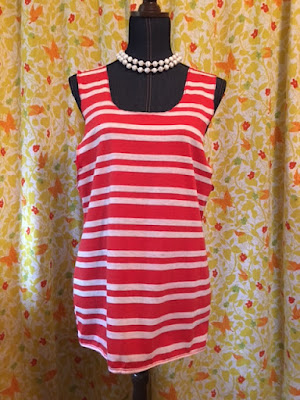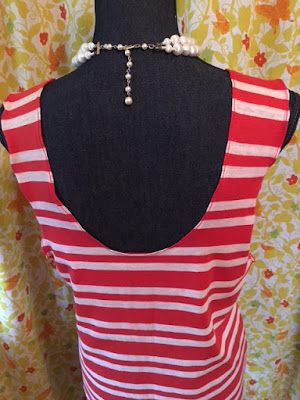I wanted to share a few more recent additions to my pattern collection. One thing that always interests me is the date a pattern was released; however, that little tidbit of information isn't always readily available. The major pattern companies were rather inconsistent in their methods of dating or not dating the patterns. Vogue patterns didn't consistently put a copyright date until the 70s or 80s. It's usually pretty easy to tell patterns from the 1940s and 1950s by the styles shown on the pattern envelopes. Advance patterns, which happen to be among my favorites, did not print the date anywhere on the envelope or instructions. Simplicity and McCall's patterns from the 50s on did include a copyright date and for that I'm grateful. I've done a bit of research online to gather this info, and therefore should thank
vintagestitching.com for their work!
Without further ado...
 |
| Advance # 6011, late 1940s |
I've had quite a few Advance patterns in the last few years. I find the envelope illustrations to have a more sophisticated look than McCall's or Simplicity. This halter-style apron was one I had never seen before. Judging from the original price of 35 cents and the fact that the Advance logo is printed at the top center, this one is from the 1940s, rather than the 50s, which is what I'd originally guessed. It's definitely a postwar pattern--the full-length version requires 4 or more yards of fabric. This one is a find: still factory folded! As it is an unprinted pattern, I wouldn't think of attempting it.
 |
| Advance #5407, late 1940s. |
One of the reasons women used to sew most of their own clothes, and most of their children's clothes, was that it was cheaper than buying off the rack. I wish patterns were still 25 cents. This is another Advance pattern I'd never seen so was happy to add it to my collection.
After fabric rationing ended, fashion reflected just that, and of course Dior's "New Look" was introduced in 1949, beginning the the iconic style that we all associate with the 1950s: full skirts, which I happen to love. I think they're comfortable and flattering (all that fabric is good camouflage...). Here's a great example of the classic 50s look:
 |
| Simplicity # 2005, 1957 |
And last but not least...a very lovely Vogue:
 |
| Vogue # 6469 |
I couldn't find much information on this particular pattern. The
Vintage Patterns wikia says it is "circa 1948" but it could be the early 50s. Either way, the illustration is so pretty. And this pattern has never been used! Good to know there is a long history of buying history of people buying patterns but never actually using them. This means that I am not alone. Of course, this pattern is sized for someone a wee bit skinnier than I...so if you are one of those lucky people, and want to sew yourself a fabulous 50s dress, this one is for sale on my
etsy shop, along with others that are not the right size for me.
On my second visit to the Planned Parenthood book sale, I found some beautiful 40s and 50s items:
 |
1942 school book
|
This well-loved school book from 1942 will make an adorable journal. It's seen a lot of wear, but I like it when old items can be made new again.
 |
The Luckiest Girl by Beverly Cleary, c. 1958. Book Club edition with dustjacket.
|
I consider this copy of
The Luckiest Girl a really lucky find! Beverly Cleary books are hard to come by, though I'm not sure why. This is the only old Beverly Cleary book I've ever come across at the book sale; usually I only get Cleary titles from the school library. I think Beverly Cleary is one of the best writers ever; her insight into how kids think and feel is dead-on brilliant. I spent many hours reading her books as a child: all the
Ramona Quimby books, which were (and still are!) among my absolute favorite books when I was growing up, the
Henry Huggins books, and others like
Fifteen, Sister of the Bride, and of course, this one. This book is not going to become a journal; I'm keeping it for myself!
There's a lot more than books at the book sale: yesterday I took the time to browse through a couple of bins of vintage ads and found a few that look just perfect on the walls of our very retro kitchen:
These three ads are all from 1940 editions of the
Saturday Evening Post. Great home decor for only 75 cents each! Even magazine ads from way back when are pretty. They look great with the tomato-red Formica countertops in our kitchen.







































